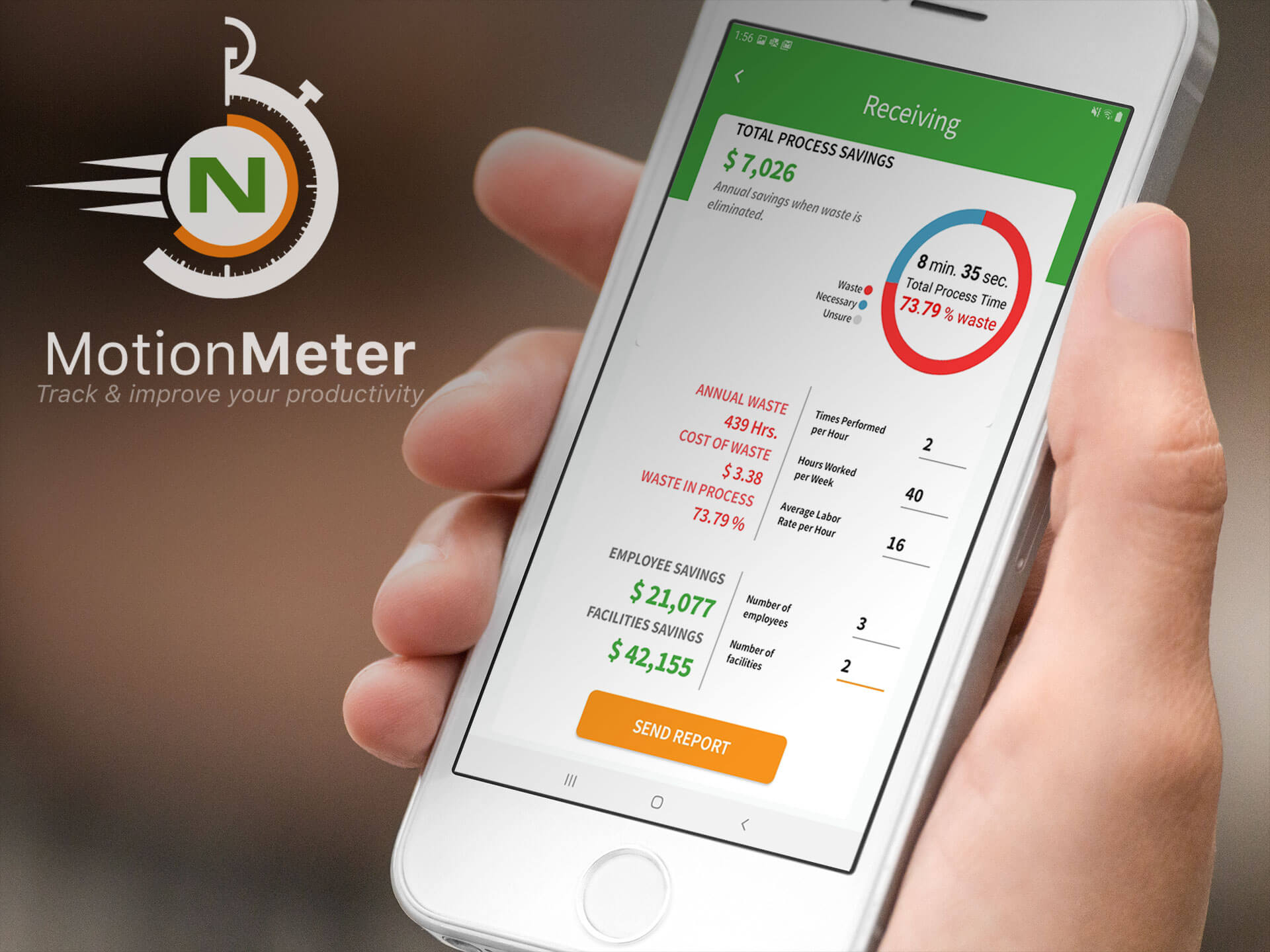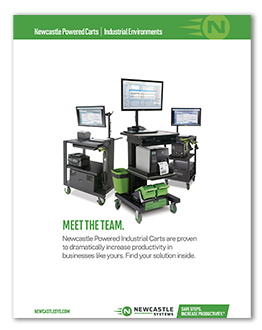
In the fast-paced eCommerce environment, every day, hour, and minute between the time an order is placed until it arrives on the customer’s doorstep is vital. If a brand takes too long to fulfill an order, it can negatively impact the customer experience and the brand’s reputation. More eCommerce businesses and logistics providers are taking a closer look at a metric called “dwell time.” Here’s what that is and how it can impact order fulfillment efficiency.
What is Dwell Time?
 Dwell time in fulfillment and logistics refers to the period that products or assets, such as trucks or pallets, remain idle at any particular point in the supply chain. Basically, dwell time is the amount of time that equipment or goods are not being processed or actively moving toward their final destination. Some of the places you might encounter dwell time include:
Dwell time in fulfillment and logistics refers to the period that products or assets, such as trucks or pallets, remain idle at any particular point in the supply chain. Basically, dwell time is the amount of time that equipment or goods are not being processed or actively moving toward their final destination. Some of the places you might encounter dwell time include:
- Time between order receipt and order fulfillment
- Time it takes to pick and pack an order
- Time between creating a label and providing shipment tracking
- Time between providing shipment tracking and shipment movement
These seemingly minor lag times can quickly add up, leading to a significant impact on many aspects of your business.
Dwell Time’s Impact on Order Fulfillment Efficiency
Anytime products are just sitting idle, they aren’t getting any closer to the customers who paid for them. How does dwell time impact order fulfillment efficiency? Here is a breakdown of several ways these delays can affect your business:
- Increased Costs — Longer dwell times lead to increased storage, labor, and freight costs.
- Reduced Productivity — Delays in transportation, at ports, and in the warehouse can impact inventory levels and the fulfillment process.
- Supply Chain Disruptions — Dwell time problems can impact many different areas of the supply chain.
- Strained Relationships — Facilities that have labor issues or lack access to reliable shipping providers may experience strained relationships with other fulfillment partners.
- Poor Customer Satisfaction — Companies that experience dwell time issues are at risk of alienating customers and losing valuable business.
What is the Cost of Dwell Time?
One of the biggest problems eCommerce businesses face isn’t just a lack of efficiency; it’s the inconsistency and unpredictability offered by excessive dwell time. When a customer hits the “buy” button on a website, they are investing in a promised customer experience. If an eCommerce brand claims it offers a smooth and fast delivery process, what happens when it fails to deliver?
Many customers aren’t comforted when they get a “notice of shipment” from a seller. Most shipping labels are printed automatically, which generates these customer notices. It can often be additional days after that notice before the product actually starts moving toward the final destination, which is dwell time that can produce frustration.
Some of the primary costs of dwell time for a business include:
Storage Costs
Containers and trailers kept longer at various points than intended are subject to costs from warehouses and ports. These costs result from longer idle times and can significantly reduce profitability, especially for businesses handling a high volume of products.
Detention and Demurrage Charges
Shipping companies often charge detention and demurrage fees for containers that sit at ports longer than scheduled. The same charges are likely for trailers that remain after their scheduled pick-up times.
Increased Labor Costs
Delayed shipments due to dwell times can lead to increased labor costs. Truck drivers must devote extra hours as they wait for cargo to be unloaded or loaded, and warehouse workers might have to work extra time to clear backlogs.
Reduced Equipment Utilization
Logistics equipment is meant to be operated at peak operational efficiency to get the best operational and financial results. When there are too many dwell-time issues throughout the system, this equipment won’t operate as intended.
Operational Delays
 Excessive dwell time generally causes widespread operational disruptions. These delays can be costly, particularly when you have a system that is meant to run like a well-oiled machine. A single disruption can create a ripple effect throughout the entire network, leading to missed deliveries and dissatisfied customers.
Excessive dwell time generally causes widespread operational disruptions. These delays can be costly, particularly when you have a system that is meant to run like a well-oiled machine. A single disruption can create a ripple effect throughout the entire network, leading to missed deliveries and dissatisfied customers.
Ways You Can Control and Reduce Dwell Time
Now that you know how dwell times can impact your operational efficiency and the costs associated with these delays, here’s how you can control and reduce these issues:
Improve Load Planning and Dock Scheduling
You can reduce and control load time by focusing on and optimizing some of your basic logistics procedures. Here are a few best practices that can deliver positive results:
- Optimal Load Planning — Truckloads should be arranged in such a way as to maximize the use of cargo space and minimize picking times. For example, you can palletize similar items together and combine orders going to the same delivery area.
- Efficient Dock Scheduling — Consider allocating resources to more efficient dock scheduling so you have a steady flow of incoming and outgoing shipments, which will lessen the potential for idle time.
- Pre-Planning Communication — Create efficient tracking and check-in procedures so everyone in the logistics chain understands what needs to go out and the timelines expected.
- Use of Cross-Docking — Use cross-docking strategies wherever possible, which eliminates the need to store inventory between the receipt of goods and order fulfillment.
Leverage Technology for Efficiency
Your business can achieve significant improvement in dwell time and efficiency by leveraging various technology solutions:
 Warehouse Management Solutions (WMS) — Your warehouse management system (WMS) should be the foundation of your business. You can use it to simplify inventory management, picking, and order fulfillment.
Warehouse Management Solutions (WMS) — Your warehouse management system (WMS) should be the foundation of your business. You can use it to simplify inventory management, picking, and order fulfillment. - Advanced Tracking Solutions — You can also integrate advanced tracking systems with a WMS. Using RFID tags, you can get real-time tracking of products and resources, allowing you to measure and reduce dwell time.
- Robotics and Automation — Take your operations a step further by implementing robotics and automation solutions. When you automate various processes, like picking and packing, this lessens human elements that can lead to delays or errors.
- Artificial Intelligence (AI) — Finally, AI tools can analyze your past data to identify patterns and create accurate forecasts, allowing you to prevent delays and optimize your processes.
As the field of logistics continues to evolve, there’s little doubt that every second matters in the order fulfillment process. While dwell time might seem like a straightforward concept, several factors can impact the time between receipt of an order and the time it gets moving toward the customer. The good news is that you can optimize your processes and reduce dwell time by leveraging technology and other strategies.












